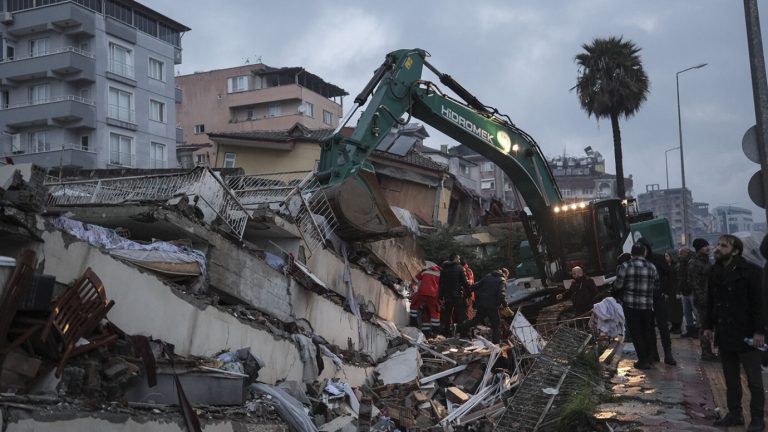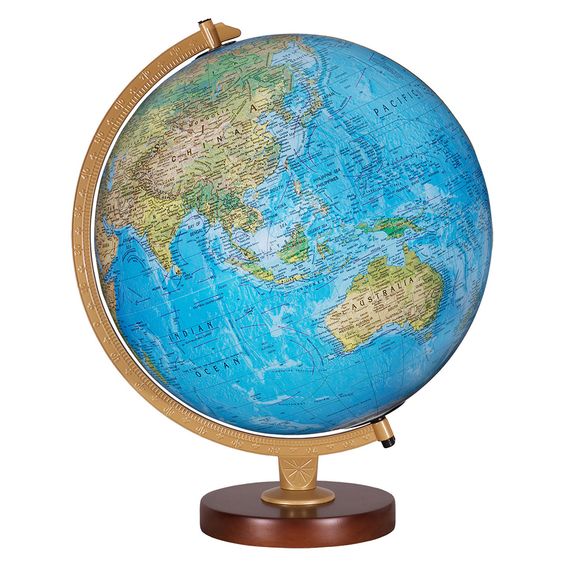
The warring factions have moved to exploit the situation by shifting military positions and attempting to expropriate relief supplies. Totally dependent on these supplies are 4 million Syrians, many of them refugees living in tents.
By Tom Arms
The death toll of Turkey’s earthquake has passed the 20,000 mark. It will soar further as freezing weather and disease sweep through the refugee camps and devastated towns and villages to replace falling rubble as the primary cause of death.
But the earthquake has also created and exacerbated political problems and opportunities whose rippling aftershocks have the potential effect of toppling political as well as physical structures.
The first possible victim is Turkish President Recep Tayyip Erdogan who is coming under attack for his failure to build sounder structures in the middle of the one of the world’s most dangerous earthquake zones. It should be noted that Erdogan rose to power on the back of Bulent Ecevit’s failures after a 1999 earthquake.
The destruction in southern Turkey came at both the best and worst of times for President Erdogan. His popularity is plummeting amidst economic problems and increasing dissatisfaction with his autocratic rule. There is a real possibility that he could lose the parliamentary and presidential ballot set for 14 May.
But at the same time, the natural disaster has created opportunities for Erdogan. He has declared a three-month state of emergency which will take him right up to Election Day. This will enable him to deploy troops and tighten his stranglehold on the media. Already social media users have been arrested for criticizing the government’s earthquake policies.
The earthquake has also disrupted Erdogan’s military occupation of northern Syria. The Northern part of war-torn Syria is controlled by a myriad of overlapping and competing military factions and dotted with civilian refugee camps. The Turks are fighting the Kurds who are supported by a small contingent of US troops are opposing an Al Qaeeda affiliate Hayat Tahir al-Sham (HTS). Syria and their Russian allies are opposed to everyone and all factions will be seeking military and political advantage.
The Syrian regime of Bashar al-Assad who already accused Washington of politicizing the earthquake by its refusal to channel aid for Syrian victims through Damascus. The Americans are the biggest aid donors ($15 billion) to the region, but insist that all support must go through US-recognized aid agencies.
Meanwhile Assad’s supporters are jumping on the Syrian bandwagon. Russia, Iran, Dubai, Iraq and Algeria are all coming to his aid with relief workers, supplies and cash. This, of course, only serves to strengthen the anti-American forces in the region. Even the European Union is providing support to Syria as well as to Turkey. Brussels has allocated $7 million in emergency aid to both countries through its Civil Protection Mechanism. It is one of the EU’s largest emergency assistance donations to a foreign country.
However, aid to the affected regions in Syria is being hampered by damaged or blocked communications. For years foreign aid agencies have brought supplies into Syria’s Northwest Idlib province via southern Turkey. This road is now closed due to earthquake damage and military road blocks. The region’s Hatay Airport is also out of action.
On top of that, the warring factions have moved to exploit the situation by shifting military positions and attempting to expropriate relief supplies. Totally dependent on these supplies are 4 million Syrians, many of them refugees living in tents.
 World Review
World Review
While a Chinese balloon floated through American skies President Joe Biden stepped up to the podium to deliver his annual State of the Union Address to a joint session of Congress.
The events were notable for two reasons: They exposed an irrational Yellow Peril fear that more than matches the Red Scare of Cold War years and pointed to a possible new era of American isolationism.
Conspicuous by its absence from Biden’s address to the Joint Session of Congress was any mention of foreign policy. With war raging in Ukraine, Turkey and Syria devastated by earthquakes, South America in political turmoil and China expanding, spying and rattling sabres over Taiwan. One would have thought Biden would have focused more on the world situation.
Instead he spoke about domestic concerns. Biden’s success in creating jobs; protecting American industry and controlling inflation. With at least one eye focused on next year’s elections, he is stealing Republican clothes by shifting to a more isolationist stand.
In this respect, the president appears to be following rather than leading US public opinion. The latest polls show a significant drop in American support for the war in Ukraine. China, however, is a different matter. The Chinese spy/weather balloon (probably a bit of both) did secure a passing reference in the president’s speech; probably because of the hysteria it generated among the American public. The fact is that countries spy on each other. The US spies on China. China spies on the US. Russia spies on….
Most of the spying is unseen. Intelligence operatives skulking in the corridors of power or satellites in space. The balloon, however, could be seen as it floated from Alaska, over missile silos in Montana and North Dakota and then finally to the Atlantic where it was shot down by US fighter planes.
________________
The much discussed Asian Pivot was this week back in the news. For a start, American troops are returning in big numbers to the Philippines. The reason? The threat of China and the need to maintain international access to the South China Sea and protect Taiwan.
With a brief wartime interregnum, the US had a major military presence in the Philippines from 1898 until 1992. Subic Bay and Clark Air Base were for many years America’s biggest overseas bases. The naval facilities at Subic covered as much land as Singapore and at the height of the Vietnam War 47 ships were based there. The neighboring city of Olongapo was one big red light district.
For a long time, the US bases were sovereign American territory, a holdover from the days when the Philippines was an American colony. But in 1979, the US acceded to nationalist aspirations, ceded the land to the Manila and became rent-paying tenants. When the Filipinos increased the rent, they left. Vietnam and the Cold War was over. Relations with China were stable. Subic Bay was expensive and redundant.
The Americans are now returning, but not on the same terms as before. Since they left in 1992 the Filipino constitution has been rewritten to ban the permanent basing of foreign troops in the Philippines. So the new agreement means that US troops will be stationed on a “rotational basis.” This is probably legal semantics to circumvent the nationalists. American construction companies are already on site building new barracks, air strips and port facilities.
_________________
Further north, in Japan, the government of Fumio Kishido has decided to beef up national defences. The plan is to increase military spending over the next five years by 60 percent to the NATO target of two percent of GDP. Japan would then be the world’s third largest military.
The new Japanese military would assume responsibility for many of the regional Western defense duties. This delights Washington. America has 50,000-plus troops based in Japan. They are expensive to keep there and can be usefully deployed elsewhere.
It will, however, take at least ten years for the increased defense spending to have any real impact. Much of the money will need to be spent on military infrastructure including a bigger arms industry, new bases, roads, ships, recruitment and training and missile systems. These take time to build and so in the short and medium term, Japan will continue to be dependent on the US.
There is also the question of whether or not Kishida can push his defense spending program through the Japanese Diet (parliament). There is fierce opposition from both the pacifist lobby and the fiscal conservatives. The pacifists are probably the lesser problem. Memories of World War Two and Japanese militarism are fading. Of greater concern are the fiscal conservatives. With public spending at 235 percent of GDP there is little room for borrowing to pay for more weaponry. So the plan is to raise the money with a wide range of tax increases. Unsurprisingly, this is proving unpopular, and a threat to Kishido’s premiership and his defense program.
_________________
India too is increasing its defenses. The sub-continent nation this week announced it is putting a refitted Soviet-era aircraft carrier in the Indian Ocean. The INS Vikramaditya will soon be joined by a second aircraft carrier which means that the Indian navy will have two full battle groups in the Indian Ocean.
The Chinese have also been increasing their naval presence in the region. They will soon be deploying an aircraft carrier in the Indian Ocean and have naval facilities in Djibouti. They also have commercial port facilities in Pakistan, Sri Lanka, Bangladesh and Myanmar. All these countries have severe political and/or economic problems which China could use to convert the commercial facilities into military.
India and Japan are China’s historic rivals in the region
Military analysts are certain that any Sino-Indian war would be dominated by clashes on the land with Chinese troops attacking over the Himalayas. But the sub-continent’s communications with the rest of the world—especially Europe and America—are via the oceans and so its navy would play a vital role in keeping the sea lanes open.
India and Japan are China’s historic rivals in the region, and the countries are two of the four legs of the anti-Chinese Quad Alliance (the US and Australia are the other two). India is also this year set to overtake China as the world’s most populous country and its economy is growing. It should be helped by this week’s budget which announced increased government spending on business-friendly infrastructure projects.
India, however, does not have the same historic and military ties to the US as the other members of the Quad. During the Cold War years it was the leader of the Non-Aligned Movement, but with a decided bent towards Moscow. The Soviets became India’s main weapons supplier and strong links were forged which continue to this day. Russia and India recently agreed a joint project to manufacture Kalashnikov rifles in India and Delhi has refused to join Western sanctions against Putin.
_____________________
Pakistan was America’s major South Asian ally during the Cold War years. It countered the Soviet links to India; provided a diplomatic conduit to China and was the base of operations against the Soviet occupation of Afghanistan.
But relations soured when the Soviets left and the Taliban took over. Pakistan was a major supporter of the Islamic fundamentalists whose primary target shifted from Moscow to Washington. But Pakistan still needed American military and economic aid to counterbalance the threat from their traditional enemy India. So the Pakistani’s walked a swaying political tightrope.
Clinton agreed, provided the weapons and Musharraf gave them to the Taliban
Few were more adept at this then Pervez Musharraf who died this week. The army chief of staff turned president was expert at balancing between the demands of the Washington and the fundamentalist mullahs churning out West-hating jihadists from the madrassa of Pakistan. During the Clinton Administration, Musharraf persuaded the US President that he was the man to stand up to the Islamic fundamentalists– with American weapons if need be. Clinton agreed, provided the weapons and Musharraf gave them to the Taliban.
Musharraf ruled as a military dictator from 1999 to 2007. Among other actions, he repeatedly arrested Pakistan’s Supreme Court, suspended the constitution and declared a state of emergency. After finally agreeing to elections, he fled to London to avoid impeachment. He briefly returned but then fled again after being arrested for treason. He was tried in absentia and sentenced to death. The sentence was largely symbolic as by this time he was in Dubai dying of the rare disease of Amyloidosis. When Musharraf passed away aged 79, the Pakistani Parliament refused to say prayers on his behalf.
Musharraf’s foreign policy legacy is one of distrust and duplicitousness. Western countries are now worried about the close Afghan-Pakistani ties, Islamic fundamentalism in Pakistan and the links with Beijing. China has a commercial port at Gwadar on the Arabian Sea and holds an estimated 50 percent of Pakistan’s foreign debt. Recent floods have destroyed Pakistan’s agricultural industry and increased the likelihood of increased Chinese influence.
______________________
 Tom Arms is foreign editor of Liberal Democrat Voice and author of “America Made in Britain.”
Tom Arms is foreign editor of Liberal Democrat Voice and author of “America Made in Britain.”
(Authors views are his personal and do not reflect editorial policy of Sindh Courier)